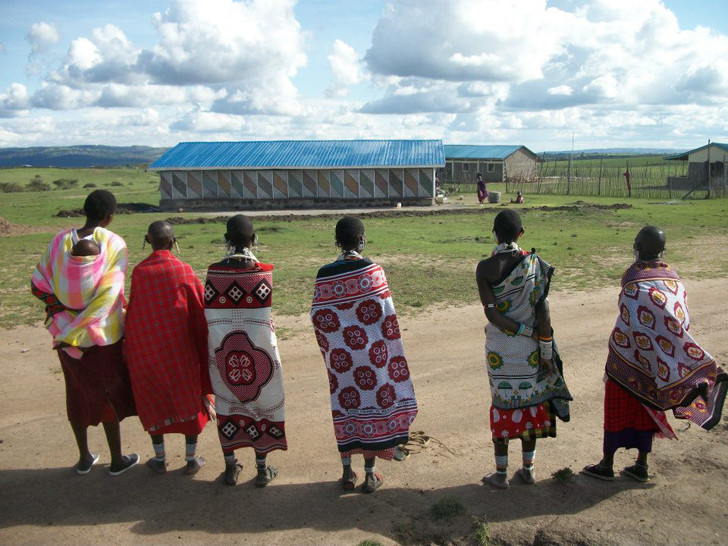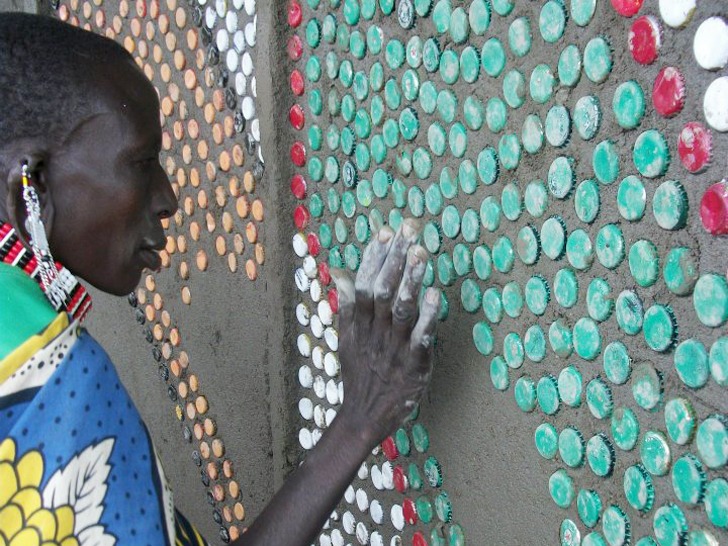Dear Internet Society Family & Fellow Internet Society Grantees:
I am excited to inform you that the implementation of the solar-powered Internet kiosk at
Loita Hills Academy is finally complete!
After receiving a grant from the Internet Society to implement a solar-powered Internet kiosk,
Charles Newman, Designer and Architect from New York City brought up the
15,000 Bottle Caps for Africa concept to house the solar-power Internet kiosk at
Loita Hills Academy, one of the programs of our organization
Under The Acacia. The building design for this revolved around Newman’s inclusive approach to design, which made it imperative that he work closely with the local Maasai people and give them ownership over the build. More than an architectural feat decorated with colorful bottle caps laid out by Maasai women according to traditional jewelry patterns, the project also creates social cohesion and introduces technology in a non-intrusive way. Newman explains, “In a community that has historically resisted western influence, allowing them to create something unique to their tribe helps them understand that while computers might be foreign, it is an opportunity to further enrich their own culture.”

Women retreating to have a meeting of their own to elect their three leaders, that will then organize and over see the design process.
One of the reasons that it has proven so difficult for organizations to work with the Maasai, is the tribe’s historic resistance to western culture. This has preserved the social structure, the way of life, and their beautiful Maasai aesthetic from dilution. The introduction of education and information, which is so craved by the younger generations, is much more of a delicate matter when considering the historic values of the Maasai people. Working with the community leaders to move the project forward could not have been done without Under The Acacia’s long standing relationship with the village and our respectful, community driven design process. Many of the community’s younger generation now have over 1,000 friends on Facebook within months of receiving cell phone access and Internet connectivity.
Thousands of bottle caps were collected around the world
Implementing the solar-powered Internet kiosk in the Maasai land was fraught with problems because of the lack of roads, making delivery of materials extremely difficult – often cost prohibitive, and the use of local materials is even more important. Further, with no source of water, construction is largely reliant upon the rains and effective water catchment systems are invaluable. Happily though, this remote location provides beauty that is unmatched by other parts of the world. There’s really nothing like working while a herd of wildebeest graze upon the horizon.

Bottle caps were sorted for eight to nine days.
For building the school at Loita, we have always used stone as the primary building material. In Newman’s words, “although stone is an excellent choice, it stands in contrast to the surrounding manyattas and bomas (homes). In the design of the Learning Center, Newman strove to blend standard stone construction with a new method of wall construction that modernizes that of boma construction. Newman had hoped to incorporate cow dunginto the design, though with most cows having migrated to greener pastures at the time of construction, the design was simplified to a ferrocement method. Most commonly used in the construction of water tanks, the method still resembles the waddle and daub method used in boma construction.
Bottle caps were categorized by color
Maasai jewelry is unique throughout the world, and can be recognized as such because it follows a distinct set of rules. There are primary colors and secondary colors, each color has a symbolic significance, and different pieces of jewelry are worn for different occasions. Newman’s design incorporated the unique cultural art into the design of the building, successfully instilling the ownership so necessary to the success of such a project.
The women came up with various designs and settled on a diamond pattern for the exterior and a traditional Loita pattern for the interior walls
A study model was built with the bead pattern to make sure things were on the right track
Extremely organized and hard working, the women drafted the construction documents through scaled versions of jewelry that they designed specifically for the Learning Center. In the last days of construction, the women worked alongside the team of masons to install almost 50,000 colored bottle caps.
The outside wall receives final preparation before the bottle caps are installed
The design plan is followed and bottle caps are individually laid to build the exterior

Halfway through the outside after day 1.

 Community members admire the outcome from afar!
Community members admire the outcome from afar!
The solar-powered Internet kiosk is finally up and running! The kiosk features eight computer stations, one manned administrator terminal, and broadband wireless Internet connectivity. As soon as the technology was installed and we underwent our soft launch in May 2012, we purchased our first month of connectivity to the Internet and the students at the school began using the kiosk on June 11, 2012. For further information on the project, please read the final report available on the website.
Our partners in this endeavor are: Internet Society, Greystone Aviation, Charles Newman Designer, Lil’ MDGs, Youth Service America, and FedEx.
On behalf of our Project Implementation Team,
Dylan Mahalingam | dylan@undertheacacia.org
undertheacacia.org | loitahillsacademy.com | the7campaign.com
p: +1 603 722 0414 or +1 917 968 5812 (USA) | +254 (0) 724 698 123 (Kenya)
f: +1 603 546 7830
Facebook | Twitter
and
Charles Newman | charlesnewmandesigner@gmail.com
afritek.wordpress.com
Skype: charles.mwendo.newman | Twitter










 Community members admire the outcome from afar!
Community members admire the outcome from afar!
